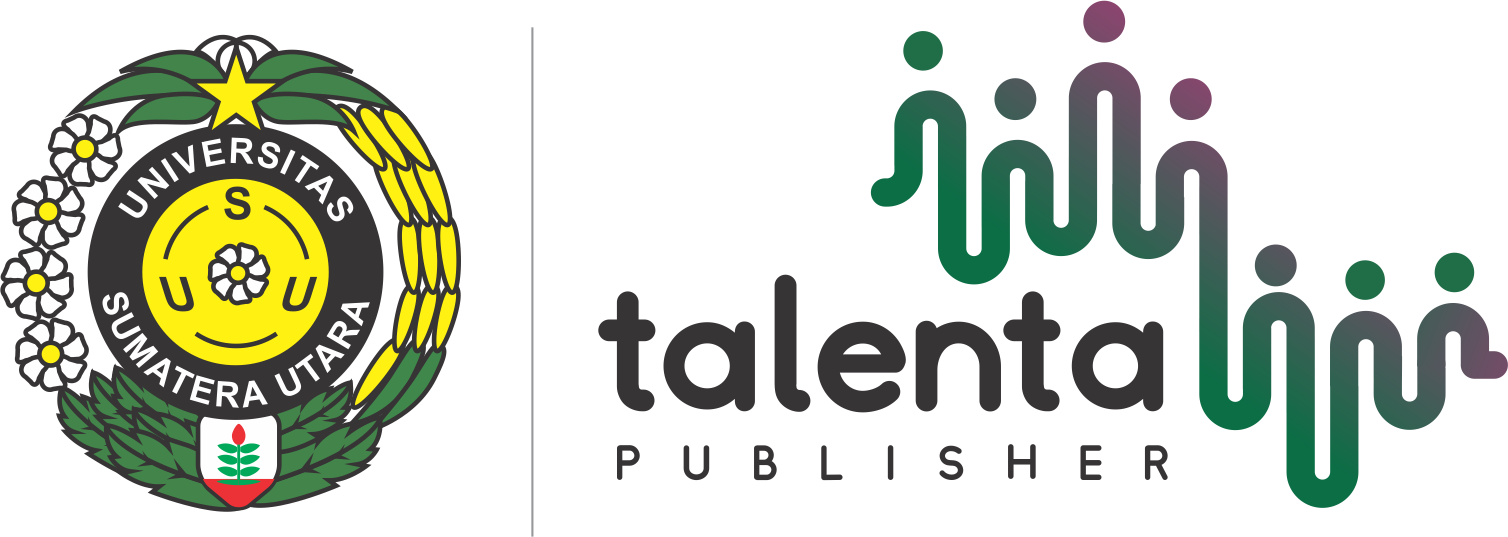Pengendalian Hama Utama Pada Perkebunan Kakao di Sumatera Utara dan Jawa timur
| Authors | ||
| Issue | Vol 4 No 1 (2023): Talenta Conference Series: Agricultural and Natural Resources (ANR) | |
| Section | Articles | |
| Section |
Copyright (c) 2023 Talenta Conference Series: Agricultural and Natural Resources (ANR)  This work is licensed under a Creative Commons Attribution-ShareAlike 4.0 International License. |
|
| Galley | ||
| DOI: | https://doi.org/10.32734/anr.v4i1.1735 | |
| Keywords: | semut hitam Caonopomorpha cramerella Cataenococcus hispidus Rattus tiomanicus Callosciurus spp biji cokelat sarang dari semut hitam black ant cocoa nest of black ant | |
| Published | 2023-02-22 |
Abstract
Kakao, Theobromae cocoa, L merupakan salah satu komoditas ekspor yang memiliki prospek positif. Indonesia memiliki lahan yang cukup luas, iklim yang cocok untuk kakao dan ketersediaan sumber daya bagi petani atau pekebun. Dalam beberapa tahun terakhir produksi kakao mengalami penurunan akibat serangan hama utama seperti Penggerek Buah Kakao (Conopomorpha cramerella) Snellen, Nyamuk Mirid Kakao (Helopeltis theobromae) Miller, Tikus (Rattus tiomanicus (Miller) dan Tupai (Callosciurus notatus) Boddaert. Pengendalian hama utama kakao dalam tulisan ini berdasarkan hasil percobaan dan pengamatan komersial di perkebunan kakao PT PP London Sumatera Indonesia Tbk yang berlokasi di Sumatera Utara dan Jawa Timur. Pengendalian hama utama dilakukan dengan menerapkan pengendalian hayati dengan menggunakan semut hitam, Dolichoderus throracicus (Smith) dilanjutkan dengan pemangkasan pohon kakao dan pemanenan setiap 7 hari. Serangan hama dikendalikan di bawah ambang ekonomi jika>70% buah kakao pada pohon terdapat populasi semut hitam. Penggunaan sarang buatan berbahan poliester akan bertahan lebih lama dan populasi semut hitam akan lebih stabil dan lebih efisien.
Cocoa, Theobromae cocoa, L is one of the export commodities that has positive prospects. Indonesia has a properly large area of land, the climate is suitable for cocoa, and the availability of resources for farmers or planters. In recent years cocoa production has decreased due to major pests such as the Cocoa pod borer (Conopomorpha cramerella) Snellen, Cocoa mosquito mirid (Helopeltis theobromae) Miller, Rat (Rattus tiomanicus (Miller) and Squirrel (Callosciurus notatus) Boddaert. The control of the main cocoa pests in this paper is based on experimental results and commercial observations at cocoa plantations PT PP London Sumatra Indonesia Tbk located in North Sumatera and East Java. The main pest control is carried out by applying biological control by using black ants, Dolichoderus throracicus (Smith) followed by pruning of cocoa trees and harvesting every 7 days. The pest infestation is controlled below the economic threshold if >70% of the cocoa pods on the trees have black ant populations. The use of artificial nests made of polyester will last longer and the black ant population will be more stable and more efficient.






